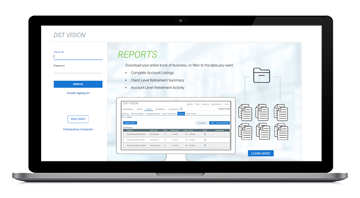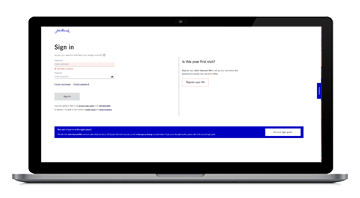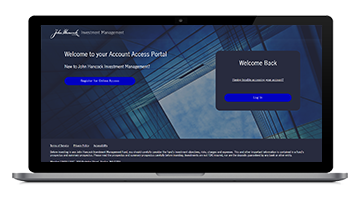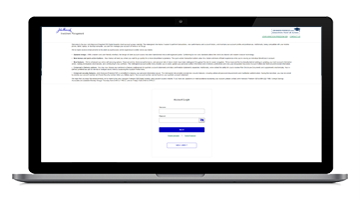5 myths about 529 education savings accounts
When it comes to saving for your child’s education, only one option allows parents to make tax-free withdrawals for qualified expenses and maintain control of the account: 529 education savings plan accounts. Although 529s have been around for nearly three decades, many parents could use a refresher to clear up misconceptions they may have about how these savings plans work. Here are some of the more common myths about these accounts, updated with the latest rules and limits.

Myth 1
529 accounts can only be used to save for college.
529 account funds can be used at any accredited institution eligible for U.S. Department of Education financial aid programs, including public and private 4- and 2-year colleges, universities, graduate schools, and trade/vocational schools—nearly 6,200 institutions.1 In addition, account funds can be used for K through 12 tuition at qualified private, public, or religious elementary and secondary schools.
Here are some recent changes affecting how 529 account funds can be used.
- Beginning January 1, 2026, the annual K–12 spending limit for qualified expenses increases from $10,000 to $20,000 per beneficiary.
- As a result of the One Big Beautiful Bill Act enacted into law on July 4, 2025, funds in 529 accounts can now be used for K–12 books, curriculum materials, fees for standardized tests, dual-enrollment tuition for college-level courses taken in high school, educational therapies for students with disabilities, and tutoring costs.
- 529s can also be used for qualified post-secondary credentialing and licensing programs (not just degrees) for skilled trades and professions.
- Rollovers from 529 accounts to Achieving a Better Life Experience (ABLE) accounts for disabled beneficiaries are now permanently allowed; the provision allowing these transfers had previously been scheduled to expire December 31, 2025.
Myth 2
You’re better off sticking with your local state plan.
While you can open an account in a 529 plan offered by almost any state—regardless of where you live or where your child uses the account funds—you may want to consider your own state’s plan to see whether it offers state tax benefits that may be unavailable from an out-of-state plan.2 As of 2025, most states and the District of Columbia offer a full or partial state tax deduction or credit on contributions. Even if your state offers a tax benefit, it’s wise to compare plans, as they vary widely in:
- Investment options
- Account and management fees
- Automatic contribution and rebalancing features
- Maximum plan limits (see below for updated limits)
Myth 3
High-income earners can’t contribute to a 529.
There are no income limitations for contributing to a 529 account, potentially making them attractive vehicles for gifting and estate planning. As of 2025, maximum aggregate state gifting limits range from $235,000 per beneficiary (Georgia) to over $620,000 (New Hampshire), with most states between $350,000 and $575,000. In addition, the IRS allows contributions of up to $19,000 per recipient ($38,000 for married couples filing jointly) without triggering federal gift taxes. It allows contributions of up to $95,000 ($190,000 for couples filing jointly) in a single year per beneficiary if those gifts are averaged out over five years of tax filings.3
Myth 4
Savings in a 529 account dramatically reduce financial aid eligibility.
529 accounts do affect financial aid, but not as much as many may believe, and they can work in concert with financial aid. A maximum of 5.64% of parent-owned 529 account assets are considered in determining a family’s Student Aid Index, which recently replaced a previous measure known as the Expected Family Contribution for the purpose of determining needs-based federal student aid eligibility. In contrast, student-owned assets are assessed at a higher rate, at 20%. You can explore your options with our financial aid estimator.
Myth 5
529 accounts are difficult to open and maintain.
It’s simple to open and fund a 529 account, which can be opened with as little as $250. Most plans allow regular, automatic contributions from bank accounts, and family members, friends, and others can make gifts into a 529 account.
How a 529 account can fit into your overall financial plan
Before you open a 529 account, it may be a good idea to consult a financial professional to help decide which plan may be the best fit for your family. Your financial professional can also help you manage the investment options, determine how much to invest, and oversee the distribution phase when the time comes.
1 For a complete list of Eligible Educational Institutions, visit the U.S. Department of Education’s Database of Accredited Postsecondary Institutions and Programs (DAPIP) at ope.ed.gov/dapip/#/home or the Federal Student Loan Program List at studentaid.gov/understand-aid/types/international. 2 Consult your financial, tax, or other professional to learn more about how state-based benefits (including any limitations) would apply to your specific circumstances. 3 For 2025. The donor must elect that the gift be treated as having occurred over a five-year period in order for it to qualify for the federal gift tax exclusion. If additional gifts are made to the same beneficiary during this five-year period, a federal gift tax may apply. If the donor dies within this five-year period, a pro rata share will be included in the donor’s estate for federal estate tax purposes. State gift and estate tax laws may vary. State laws and treatment may vary.
Important disclosures
Important disclosures
Investing involves risks, including the potential loss of principal. Financial markets are volatile and can fluctuate significantly in response to company, industry, political, regulatory, market, or economic developments. The information provided does not take into account the suitability, investment objectives, financial situation, or particular needs of any specific person.
All overviews and commentary are intended to be general in nature and for current interest. While helpful, these overviews are no substitute for professional tax, investment or legal advice. Clients and prospects should seek professional advice for their particular situation. Neither Manulife Wealth and Asset Management, nor any of its affiliates or representatives (collectively “Manulife WAM”) is providing tax, investment or legal advice.
This material is intended for the exclusive use of recipients in jurisdictions who are allowed to receive the material under their applicable law. The opinions expressed are those of the author(s) and are subject to change without notice. Our investment teams may hold different views and make different investment decisions. These opinions may not necessarily reflect the views of Manulife WAM. The information and/or analysis contained in this material has been compiled or arrived at from sources believed to be reliable, but Manulife WAM does not make any representation as to their accuracy, correctness, usefulness, or completeness and does not accept liability for any loss arising from the use of the information and/or analysis contained. The information in this material may contain projections or other forward-looking statements regarding future events, targets, management discipline, or other expectations, and is only current as of the date indicated. The information in this document, including statements concerning financial market trends, are based on current market conditions, which will fluctuate and may be superseded by subsequent market events or for other reasons. Manulife WAM disclaims any responsibility to update such information.
Manulife WAM shall not assume any liability or responsibility for any direct or indirect loss or damage or any other consequence of any person acting or not acting in reliance on the information contained here. This material was prepared solely for informational purposes, does not constitute a recommendation, professional advice, an offer or an invitation by or on behalf of Manulife WAM to any person to buy or sell any security or adopt any investment approach, and is no indication of trading intent in any fund or account managed by Manulife WAM. No investment strategy or risk management technique can guarantee returns or eliminate risk in any market environment. Diversification or asset allocation doesn’t guarantee a profit or protect against the risk of loss in any market. Unless otherwise specified, all data is sourced from Manulife WAM. Past performance does not guarantee future results.
This material has not been reviewed by, and is not registered with, any securities or other regulatory authority, and may, where appropriate, be distributed by Manulife WAM and its subsidiaries and affiliates. Manulife WAM is the global investment, financial advice, and retirement plan services segment of Manulife Financial Corporation.
© 2025 by Manulife Wealth and Asset Management. All rights reserved. The statements and opinions expressed in this article are those of the author. Manulife WAM cannot guarantee the accuracy or completeness of any statements or data.
MF4942745





